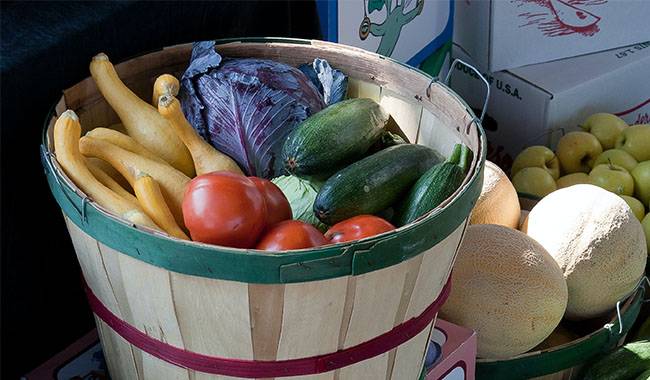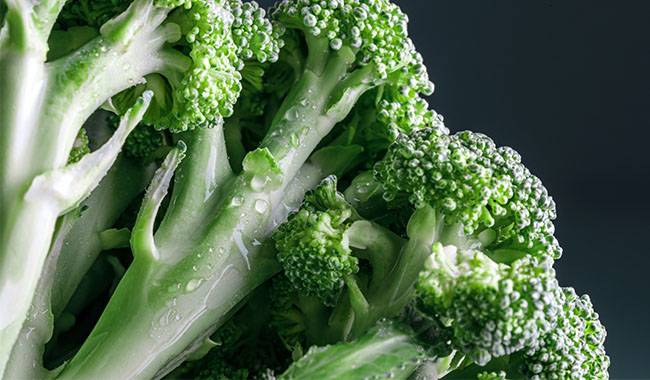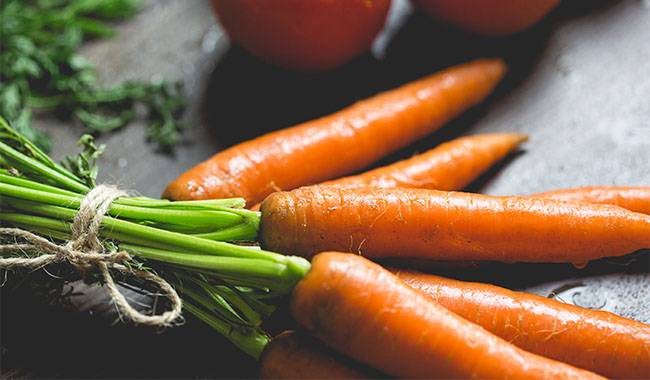
How to fertilize without causing damage, because you can over-fertilize and make the soil greasy and the fruit will “burst”? How to fertilize so that the plants have enough nutrients and form standard size and quite tasty fruits? How to do it without harming the plants with yourself, because as you know, fertilizers can cause the accumulation of nitrates in the soil (and crops), substances harmful to humans.
These problems of summer may worry every gardener. But let’s talk about everything in order. Let’s browse through the fertilization requirements for each vegetable so that it’s both interesting and useful to read.
Tomatoes
Tomatoes. What is important here is the flavor, size, color of the typical variety, and integrity of the husk. This is the purpose of the dressing planned for the last time this season. It’s no secret that tomatoes absorb a lot of substances from the soil during growth and need to be replenished with these substances at maturity.
To do this, you don’t necessarily need to poison the soil with chemicals; simply apply a light organic fertilizer to the tomatoes and apply such a fertilizer every 10-12 days until you have collected the entire harvest.
At the time of tomato ripening, considered an excellent green fertilizer, this requires chopping 6-7 pounds of nettles or other grasses and pouring 16 Gal (60 liters) of rainwater. Then you need to add to this mixture a cup of wood ash and 4.5-6.5Lb (2-3kg) of cowpeas and the mixture is ready. It remains this “fragrant” smelling mixture, mixed in a very voluminous bucket so that it can be filled in its entirety and left to ferment for two weeks (of course, you need to consider its preparation in advance, before the tomatoes ripen). After that, the solution should be diluted twice with water and watered in each bush with ripe fruits, under which you pour 0.26 Gal (1 liter) of solution every few days.
More related information about growing Tomatoes plants
Eggplant
At the ripening stage of the vegetable – if you count all the seasonings, this is usually the third seasoning. At this point, it is perfectly acceptable to dilute a teaspoon of potassium sulfate in a bucket of water and sprinkle it on 11 square feet of vegetation. And when the eggplants will be ready for harvest and need to be collected one after another, make fertilization regular about every 4-6 days, by the time the last fruit is harvested.
By the way, if the eggplant is developing less than you expected, then from the first application, we point out that you can literally add 3-5 grams of nitrogen fertilizer, also in dissolved form, preferably in the form of ammonium nitrate, up to a few tablespoons per 11 square feet.
More related information about growing Eggplant plants
Zucchini
For the maturation of these very useful vegetable crops, the best fertilizers are calcium superphosphate and potassium sulfate (not potassium chloride or potash). Calcium superphosphate is about a tablespoon per bucket of water and per 11 square feet of plot, and potassium sulfate. Also, a teaspoon, without peas is also per 11 square feet of the plot.
Zucchini just like and caladium takes about half a tablespoon under the plant, takes a few nights, and pours half of the above specification (1/4 tablespoon, or 1 teaspoon) under each bush.
More related information about growing Zucchini plants
Cauliflower

It is usually important to fertilize when the leaves of cauliflower grow to their full potential and the heads of cauliflower begin to “appear” clearly. At this point, you can arm yourself with fertilizer: take a dry form of ammonium nitrate, but apply it after a rain or after intense loosening and watering (if there is no rain, then by hand), 18-19 grams of calcium superphosphate 22-24 grams and potassium sulfate 9-14 grams – and all per 11 square feet. Then sprinkle lightly on the soil – this is quite enough and will certainly be safe.
Lovers of organic and “mineral” mixtures can use a solution of cow manure diluted 7 times in a bucket of water, and chicken manure diluted 12 times, also in a bucket of water, preferably rainwater, by the way – it is very soft.
To the solution just add 20-25 grams of ammonium nitrate, 60-70 grams of calcium superphosphate, and 30-35 grams of potassium sulfate. Only this is not all by INCH! Then little by little – 0.26 Gal (1 liter) per plant down, carefully distributed on loose soil, is fine – after the rain.
If you want the cauliflower plants to become even and well-developed, then you can apply fertilizer in parts, alternating.
Incidentally, few people know that cauliflower grows badly on acidic soil, so when it starts to mature, you can use a tablespoon of calcium nitrate, diluted in a bucket of water every ten days, and pour it out for every 11 square feet of land. In fact, dolomite powder produces the same effect, but it requires a glass full under the top, again diluted in a bucket of water, placed in exactly the same area. If the situation is critical and even field horsetail grows on your land, which is considered a clear sign of increased acidity, then we recommend pouring out half a glass of the above solution underneath the cauliflower.
And keep in mind: the last fertilization of cauliflower should be done no later than a week before the formation of complete cut heads, otherwise, not only the taste will deteriorate, but also nitrates will accumulate.
More related information about growing Cauliflower plants
Broccoli
Broccoli is usually fertilized heavily when it starts to sprout. Professionals call this fertilization the second – major – one. Usually, a few tablespoons of nitroglycerin and a few grams of boric acid are diluted with soft water in 2.6 Gal (10 liters) of rainwater. This amount is enough for five large and six smaller plants.
Once the last active growth begins, the broccoli should be watered with mud, diluting it six times. Broccoli is best watered with slurry after a rain or after loosening the soil and wetting it, and only below the roots of each plant, otherwise, it will burn. The application rate is 150-200 grams per plant.
More related information about growing Broccoli plants
Kohlrabi
Often, professionals start fertilizing Kohlrabi that have grown quite large, calling them the third species. How to visually recognize the need to fertilize Kohlrabi at this time? Quite simply, when the head will be the size of an egg. The best fertilizer for Kohlrabi during the fruiting period is the lysozyme preparation, which is very well evaluated. This preparation requires only one and a half tablespoons per bucket of water, and this standard is enough for a plot of 108 square feet.
By the way, if you don’t want to use potassium from fertilizers, but the soil on your plot is depleted of potassium, know that Kohlrabi needs potassium and it is contained in wood ash (about 5%). Since this amount is very small, you can pour a cup of wood ash into pre-watered soil in the evening and it will enrich the soil with micronutrients at the same time.
Cabbage
Fertilization of cabbage during fruiting depends on its type of maturity (early, medium, or late). Naturally, the earlier cabbage matures, the more nutrients it needs to promote the growth and development of cabbage heads, so it is likely that the application of nitroglycerin (within two weeks after planting in the soil) – 50 grams per 11 square feet per bucket of water. Wood ash is appropriate (one cup per 0.26 Gal of water under each plant). You can use chicken manure diluted 15 times (50 grams per plant) or cow manure (diluted 10 times, 60 grams per plant).
Early cabbage also likes calcium superphosphate (one teaspoon per 11 square feet of water per bucket). However, when using calcium superphosphate, you should know that it is practically unassimilated in acidic soils, but, in my opinion, almost no gardener will grow cabbage shoots in acidic soils.
A medium (for the time of year) cabbage fertilization is usually done in June when cabbage formation begins. The ideal choice here is cow manure, which must be diluted 10 times with water, or uses poultry manure, but only if diluted 20 times. It is perfectly possible to add 15-20 g of calcium superphosphate or 8-10 g of potassium sulfate to these combinations. These solutions should be used with caution – 50-70 grams per plant.
Well, there is also late cabbage – usually, it is thoroughly fertilized in the last days out of summer. As a fertilizer, use potassium sulfate at the rate of one teaspoon per 11 square feet of soil per bucket of water, or calcium superphosphate – here you need to use one tablespoon on the same area.
More related information about growing Cabbage plants
Onion
As a rule, fertilization of the radish begins when its head reaches 1.5-2inch (4-5 cm) in diameter and no less. During this period, fertilizers containing a lot of nitrogen should be completely excluded, because they intensify the growth of the bulb and do not allow the full formation of the covering scales, so the onion will store poorly.
The best choice is a mixture of potassium sulfate and calcium superphosphate; these substances will complete all the processes of “building” the bulbs and prepare them for storage. In a bucket of water, you need to dissolve 25-28 grams of potassium sulfate and 45-50 grams of calcium superphosphate, mix it well so that there are no lumps, and apply this solution to an area of 65-75 square feet.
Gardeners who grow onions on radishes and rate wood ash highly can sprinkle a 0.6-0.8inch (1.5-2 cm) layer of wood ash on the soil surface and can use it to prepare an infusion. The preparation of the infusion is simple: you need to take 300 grams of wood ash and pour it into a bucket of boiling water. Then, let the infusion stand for a day, then dilute it twice with water and water the plants. Vegetarians say that this infusion has a very positive effect on the maturation and storage time of the bulbs.
However, don’t forget: onions are somewhat spooky, so assess the condition of the plant before using any fertilizer. For example, if an active growth of its head is observed, which can be easily understood from the lush and healthy feathers, then fertilizer can be postponed. But of course, you should not grow onions with hunger, during this period, you can fertilize them with nitroaminophos card, diluting a tablespoon in a bucket of water, spending this solution per 11 square feet of area, will not slow down the growth of radishes (there is something to eat) and the harvest will not be reduced (radishes are growing), but the development of disease during this period requires vigilance.
Tell you about fertilizing onion radish, just not the important moments about his fertilization.
For example, do not do fresh fertilizer under the onion turnips, as many do (here a whole lot of trouble can occur), do not pour double and triple doses of nitrogen fertilizer (feathers will be strong and powerful, but not good for the size of the turnips). Do not exceed the dose of mineral fertilizer either (the head will be clogged with nitrates), and never throw them on the feathers when making fertilizer, I know it’s hard, but you have to try because then all the greens have to be washed with water (otherwise they will burn), so extra watering, and suddenly so wet again?
Finally, I would like to say about radish onions – try to have all the elements in the soil, the whole complex, otherwise, the lack of one of them will pull the blanket and there will be problems to get a marketable product.
More related information about growing Onion plants
Carrots

For fruiting plants, it is usually the fourth application of fertilizer, applied 20-25 days before harvest, which is the maximum. This is done as follows – first, pour water into the furrow, spending one bucket per 11 square feet, then, pour about 300 grams of wood ash per 11 square feet into the moist soil and proceed to harvest the root crop after the specified time.
More related information about growing Carrots plants
Cucumber
Usually among professionals, this is the third or fourth bottom crop. When the first fruits appear, and many have already begun to pick and enjoy their indescribable flavor and aroma, you can use bird droppings. Don’t forget to dilute it 20 times and spend 0.26 Gal (1 liter) per 11 square feet. Under cucumber fermenting grass, as we wrote above, it is best to give now three or four days, then dilute twice, adding 12-15 grams of urea and a teaspoon of potassium sulfate per bucket of water – the standard for 108 square feet of area.
If the cucumbers look like carrots and are far from the varietal characteristics (i.e., they do not match the varietal description), it is best to treat them with ammonium nitrate in a so-called foliar spray (a quarter teaspoon dissolved in half a bucket of water). Do not treat furiously in order to moisten the surface, but do not rain tropical rain.
During the period of heavy cucumber fruiting, when the mass of fruit is fully developed (usually within two weeks after the first treatment), you can fertilize the plants with potassium sulfate (18-19 grams per bucket, per 11 square feet of soil) and calcium superphosphate (16-18 grams per bucket, per 11 square feet of soil).
More related information about growing Cucumber plants
Pepper powder
There are many options for peppers during the fruiting period (every wader praises his bog, no different). Let’s start with the first option – inject green manure, as described above, but a solution of all chopped greens is best divided in a jar, filled to three-quarters, no more, in the same pounds of heavy wood ash, pour it all over the top, cover with a lid and stir daily for ten days. What remains is to dilute the resulting liquid in a ratio of 1:10 and, using anything, at least a watering can – simply water the pepper plants instead of water when watering is needed, until the most extreme (last) pepper is eaten.
The next option – a mixture of potassium sulfate and calcium superphosphate, just a teaspoon of the first and a tablespoon of the second, all stirred in a bucket of water and distributed exactly so that each pepper plant gets 500-600 grams of this solution.
Option 3: Take potassium humic acid (well, if it contains trace elements) and a packet (10 grams) diluted in 20 buckets of water, then just go around the garden and water all the peppers under the roots from the watering can. The advantages of humic acid are obvious – it is 100% organic, that is, not chemical, has a surface finishing effect, stimulates fruit growth and ripening, but is very accurate (i.e. natural) and can even improve the soil, because there it begins to sympathize with each other and actively reproduce useful microorganisms.
Radish
In general, it is best to grow radishes at home with absolutely no fertilizer, but if fertilizer is needed, then – please. As soon as you notice rapid leaf growth, make calcium superphosphate by dissolving a tablespoon in a bucket of water (108 square feet of area), and a day later make and dissolve a teaspoon of potassium sulfate, also for a 108 square foot seedbed.
Don’t be lazy, dissolve plain wood ash in a few cups in a bucket of water and distribute it to the same area as you can – like soaking in water and without wasting valuable time. Check the carrots after a week – if the leaves become pale, which doesn’t mean you’ve done anything wrong, and most likely there is very little nitrogen in the soil, then spray directly on the leaves, known as foliar spraying (one teaspoon per bucket of water, per 11 square feet this dose is enough to restore the leaves to their former color).
More related information about growing Radish plants
Beetroot
So, what cabbage soup without this bright vegetable? According to men, it subtly increases the level of testosterone in the body. But how is this possible?
Therefore, usually 25-30 days before harvesting beets, add potassium sulfate to the soil at the rate of one tablespoon per 11 square feet of soil (diluted with water) and about three tablespoons of calcium superphosphate for the same area, also diluted with water. No further fertilizer application is needed.
More related information about growing Beetroot plants
Celery
Once it starts to form tubers, it needs potassium (150 grams of wood ash per plant in loose, moist soil). After a few days, you can make Nitroglycerine by dissolving a tablespoon in a bucket of water – 108 square feet standard. This will increase immunity, improve yield, and generally only benefit.
After 20 days, you can repeat the introduction of all this fertilizer, which ends the season.
More related information about growing Celery plants
Garlic
In garlic, bulbs are usually formed in the second decade of June. What can help here is chopped calcium superphosphate or a few tablespoons of extract per bucket of water. Garlic will do well by watering the plants with this mixture.
More related information about growing Garlic plants
A few words of my own, do not write that everyone knows. Maybe no one knows.
- Note one vegetable will absorb fertilizer much better if you pre-water the soil and drape it gently after spreading it.
- If it rains, then feel free to put on your boots and raincoat. Go to the ground (of course, if it’s already time to apply fertilizer) and spread them on the surface, the results will be significantly better.







